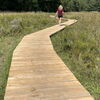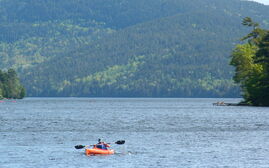‘Cutting edge’ UMaine lab will focus on veterinary diagnostics and pest management
The University of Maine Cooperative Extension will open its new diagnostic and research laboratory in Orono this month.
The Bangor Daily News reported the 28,000-square-foot facility, bringing together laboratories and research space for plant and pest management and veterinary diagnostics, will be among the most biosecure, technologically cutting edge and scientifically advanced laboratories in the state.
“This is a facility unlike any in the world that represents a significant upgrade in equipment, capacity and biosecurity,” John Rebar, executive director of University of Maine Cooperative Extension, told the BDN. The new facility open the door for increased partnerships with Maine businesses and farms that will have access to the state-of-the-art techniques and equipment.
According to the UMaine Extension website, the laboratory was funded by an $8 million bond approved in a November 2014 referendum to support Maine agriculture, facilitate economic growth in natural resource based industries, as well as to monitor human health threats related to ticks, mosquitoes, and bedbugs.
The lab is designed to aid in protecting the natural resource based economy, protecting food safety and human health and providing diagnostic and testing services for Maine’s future.
It also will enhance the pest monitoring, disease forecasting, and educational outreach University of Maine Cooperative Extension provides to Maine’s farming community. Services include:
- Statewide mosquito monitoring and a disease prevention/awareness program to combat the spread of mosquito-borne diseases.
- Providing teaching opportunities for students, as well as research and outreach facilities.
- Allowing University of Maine researchers to perform diagnostic services on large wildlife to aid in the detection, diagnosis, and management of emerging wildlife diseases.














Comments